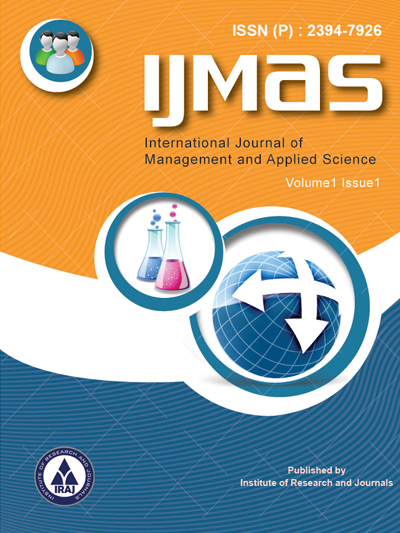Publish In |
International Journal of Management and Applied Science (IJMAS)-IJMAS |
 Journal Home Volume Issue |
||||||||
Issue |
Volume-2,Issue-9 ( Sep, 2016 ) | |||||||||
Paper Title |
Prespective of Waste Utilization in Seafood Industry | |||||||||
Author Name |
Atip Mekpiroon, Weerapong Lerdrattranataywee, Warangkana Jutidamrongphan | |||||||||
Affilition |
Faculty of Environmental Management, Prince of Songkla University, Hatyai, Songkhla, Thailand School of Allied Health Sciences and Public Health Walailak University Thailand 3 Faculty of Environmental Management, Prince of Songkla University, Hatyai, Songkhla, Thailand, Center of Excellence on Hazardous Substance Management (HSM), Bangkok, Thailand Correspondence: WarangkanaJutidamrongphan, Faculty of Environmental Management, Prince of Songkla University, Hatyai, Songkhla, Thailan | |||||||||
Pages |
96-99 | |||||||||
Abstract |
There are large amount of organic waste from processed seafood processing in terms of wastewater and solid waste. This study investigated waste utilization of frozen seafood industry in order to determine preferable technologies for waste management of seafood industries in Thailand. Fish waste is a rich source of essential amino acids and others. Frozen fish processing activities generate potentially large quantities of organic waste and by-products from inedible fish parts. Thus all inedible fish waste should be utilized rather than disposal. Mixed processing fish waste of about 1 kg was collected from rejected conveyer. The fish waste composition was categorized from 4 fish strains: Threadfin Bream, Purple-spotted bigeye, Croaker, and Siamese glassfish. The waste generation depends on the species and the process. Fish waste obtained in this study consists of head and gut, bone and meat scrap, blood, and whole size-rejected fish (75%, 16%, 6%, and 3%, respectively). The majority of fish waste was head and gut (75%) obtained from the frozen surimi production. The most captured species are ground fish and it is estimated that only 25-50% of the raw material is utilized for primary products. The remaining 50-75% of the raw material is considered processing waste and is disposed or utilized for low-valued products such as animal feed in livestock for cattle. Typically, most of fish waste is transferred asby-product material to fish meal industry. Therefore, value added alternatives would be suggested for fish waste management. Biogas production under anaerobic condition and composting by aeration are recommended. However, the utilization of seafood processing waste required efficiency improvement according to its inadequate biological stability, potentially pathogenic nature, high water content, potential for rapid auto oxidation and high level of enzymatic activities. Keywords- Anaerobic Digestion, Composting, Seafood industry, Seafood wastewater, Seafood industrial waste, Waste utilization | |||||||||
| View Paper | ||||||||||